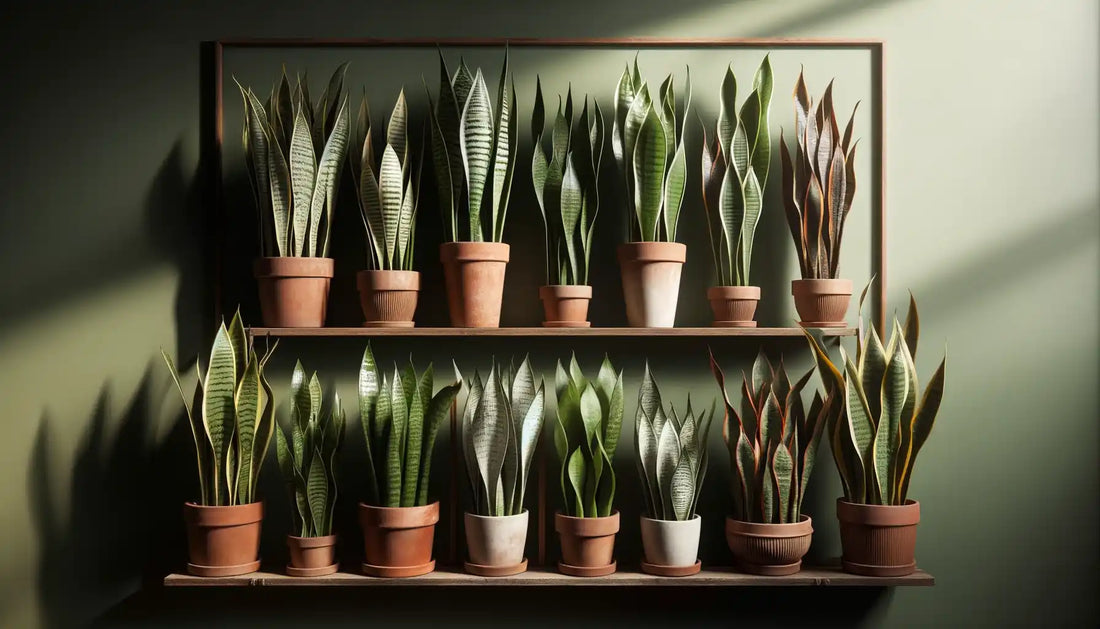
Snake Plants Type: A Comprehensive Guide
Snake plants, or Sansevierias, are a staple in many households and offices due to their striking appearance and hardy nature. Originating from West Africa, these plants have made their way into the hearts and homes of many around the world.
Benefits of Growing Snake Plants Indoors
- Air Purification: NASA's Clean Air Study found that snake plants are capable of removing toxins such as formaldehyde, xylene, toluene, and nitrogen oxides from the air.
- Low Maintenance: Ideal for beginners or those with a busy schedule.
- Adaptable: They can thrive in varying light conditions.
- Aesthetic Appeal: Their unique appearance can elevate any room's design.
Understanding Different Varieties of Snake Plants
-
Sansevieria Trifasciata 'Mother-in-law's Tongue': This is the most common variety, with tall, green leaves and characteristic yellow borders.
-
Sansevieria 'Golden hahnii': A beautiful dwarf variety that forms rosettes of green and yellow banded leaves.
-
Sansevieria 'Cylindrica': Unique round and braided leaves set this variety apart.
-
Sansevieria 'Moonshine': Features silvery, pale green leaves that can brighten up any space.
-
Sansevieria masoniana 'Mason congo': Often called the "whale fin" due to its large, flat leaves.
-
Sansevieria kirkii 'Star sansevieria': Features wavy patterns across its broad leaves.
There are more which we'll be covering in future blogs.
Care and Maintenance of Snake Plants
-
Light and Sun Requirements: They're versatile when it comes to light. While they can survive in low light, they thrive in indirect bright light. Direct sunlight can cause their leaves to burn.
-
Watering Needs: Being succulents, they don't need much water. Water them once every 2-3 weeks, allowing the soil to dry out between watering.
-
Temperature and Humidity Conditions: They prefer temperatures between 70-90°F. While they can handle dry air, they're not frost-resistant.
-
Soil and Fertilizer Recommendations: A well-draining potting mix is ideal. During the growing season, a balanced, general-purpose houseplant fertilizer can be used.
-
Propagation Methods: The easiest method is through leaf cuttings. Simply cut a healthy leaf into sections and plant them in soil.
-
Common Pests and Diseases: They're generally resistant to pests, but spider mites can sometimes be a problem. Overwatering can lead to root rot.
-
Troubleshooting Common Issues: If leaves are drooping, it might be due to overwatering. Yellowing leaves can indicate too much sunlight.
Choosing the Right Snake Plant for Your Space
Consider the space's lighting, size, and aesthetic. For instance, if you have a small space with low light, the 'Golden hahnii' might be perfect. For larger spaces with bright, indirect light, 'Mother-in-law's Tongue' can be a showstopper.
Conclusion
With their myriad benefits and varieties, snake plants are a must-have for any indoor garden. Whether you're a gardening novice or a seasoned pro, there's a snake plant waiting to find a spot in your home.
FAQs (Frequently Asked Questions):
-
Can snake plants be grown in low light conditions?
- Absolutely! While they appreciate bright, indirect light, they're known for their ability to thrive in low light, making them perfect for spaces without much natural sunlight.
-
How often should I water my snake plant?
- Typically, once every 2-3 weeks is sufficient. It's essential to let the soil dry out between watering to prevent root rot.
-
What are the benefits of growing snake plants indoors?
- Apart from their air-purifying qualities, they're low maintenance, adaptable to various light conditions, and can add a unique aesthetic touch to any room.
-
How can I propagate snake plants?
- The most common method is through leaf cuttings. Cut a healthy leaf into sections and plant them in soil. Another method is by dividing the plant during repotting, ensuring each division has a portion of the roots.







No comments